Editor’s Note:
It was the movie that inspired a generation of skiers and popularized the concept of “extreme” skiing.
It introduced mohawked bad-boy Glen Plake, a self-confessed drink-and-drug-fueled punk rocker, and showcased the cliff-jumping prowess of Scot Schmidt.
And it highlighted the thrills and freedom of France’s Chamonix valley, all set to a soaring pop soundtrack for the first time in a ski film.
Even now, 30 years later, “The Blizzard of Aahhh’s” remains the benchmark, and the film that ignited today’s freeskiing movement.
“‘Extreme’ was really an unknown word then, but once ‘Blizzard’ came out you could get an extreme combo at Taco Bell,” director Greg Stump told CNN from his central Oregon home.
The film, released in late 1988, builds through sequences in Telluride, Colorado and Squaw Valley, California before Schmidt, Plake and Mike Hattrup come together for the stirring Chamonix finale, skiing steep slopes and tight chutes with Mont Blanc as a backdrop.
That now-iconic trio came about by unfortunate chance after original crew member Lynne Wieland broke her back on the first day of filming. Now arguably the most recognizable skier on the planet, Plake wasn’t even on the initial team sheet for France.
“Seeing ‘Blizzard’ for the first time was like looking through a portal to the future I wanted for myself,” 1990s freeskiing pioneer Mike Douglas told CNN. “This group of antiheroes were exactly who I wanted to be.
“Looking back, I would say ‘Blizzard’ was one of the key catalysts that launched the extreme sports movement.”
Visit CNN.som/Sport for more news, stories and features
‘Rockumentary’
“The Blizzard of Aahhh’s” (the apostrophe was deliberate, says Stump) was the director’s fifth ski movie after a string of “goofy” moguls films.
A former North American freestyle champion and longtime radio DJ, Stump realized he could get a jump on the dominant Warren Miller ski movie franchise by using hot new sounds rather than stock studio music.
The then 27-year-old went to England to tap up record producer Trevor Horn, whose ZTT Records label had released albums by bands such as Frankie Goes to Hollywood, Propaganda and Act.
ZTT’s Liam Teeling told him: “Stumpy, my boy, you can have our music for free but on one condition: that the film you’re about to make is fantastic, because if it isn’t it won’t see the light of day.”
With his soundtrack sorted, Stump’s next task was to recruit some of America’s best “cool, unknown, hotshot skiers.”
“I had way hipper music, way hipper skiers, and comedy that wasn’t cheesy,” Stump recalls.
READ: Speed climber Kilian Jornet: The decisions are mostly ‘Is this going to kill me?’
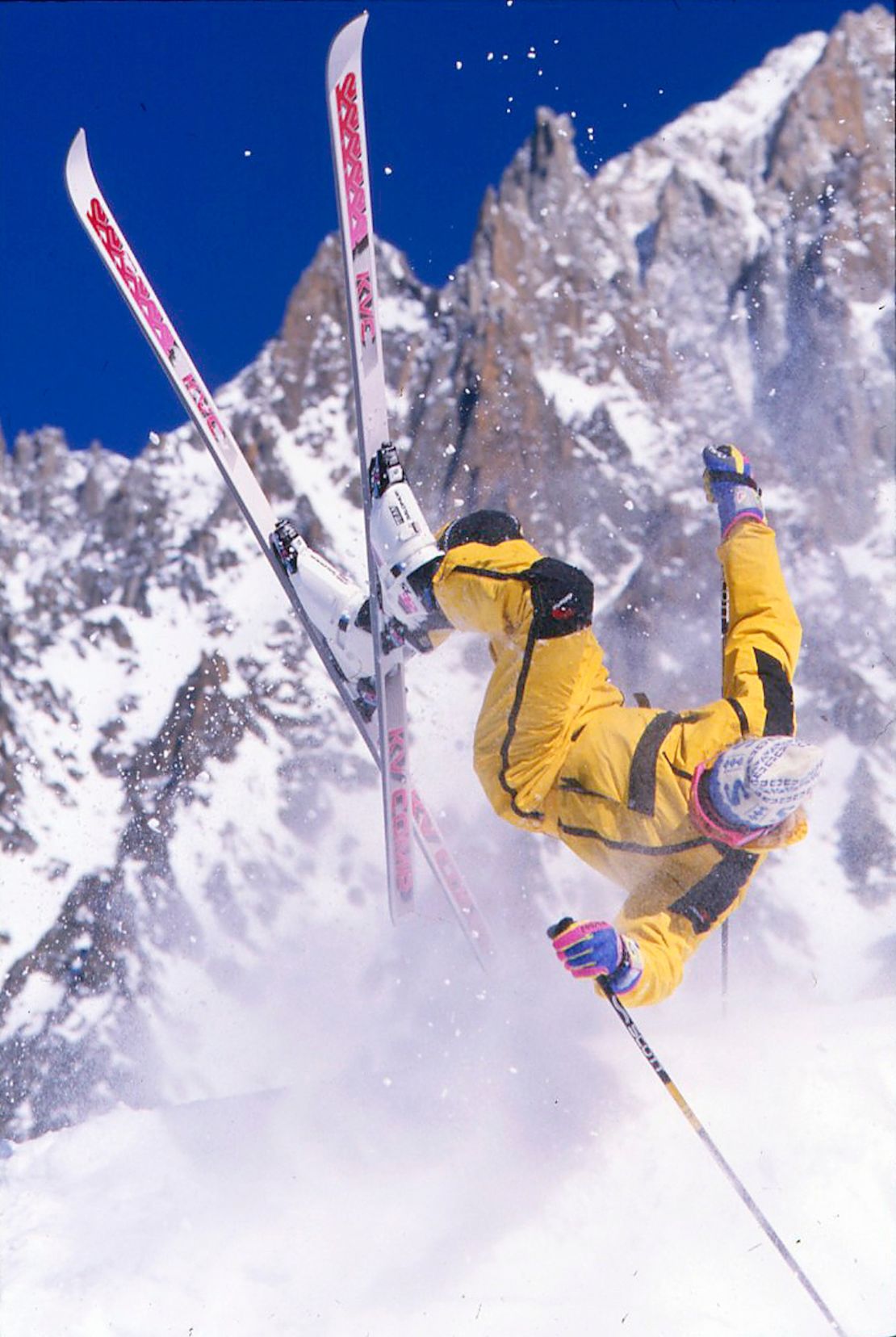
To add some pedigree, he poached Miller stalwart Schmidt, a racer turned ski film star from Montana.
Schmidt, then 26, took some persuading – Stump’s back catalog wasn’t quite his fit – but he couldn’t resist the lure of Europe after a spell living in Verbier, Switzerland.
“Greg was a young renegade filmmaker and I wasn’t paying him much attention because his films were pretty out there,” Schmidt told CNN from his home in Santa Cruz, California.
“Then he said we’re making a ‘rockumentary,’ we’ve got a budget and we’re spending the winter in Chamonix. That was very interesting.”
READ: Snowboarders’ ‘scary’ addiction
The charismatic Hattrup, a Stump regular and member of the US moguls squad, was also on the plane. Wieland, a US aerials and moguls champion who had appeared in Hollywood flick “Hot Dog …The Movie,” completed the lead threesome.
But tragedy struck when Wieland broke her back after a bad landing while skiing at Chamonix’s Grands Montets area. She was airlifted to hospital in Geneva and narrowly escaped paralysis, eventually making a full recovery.
The crew were rocked, but knew they needed a replacement.

‘Partying punk’
It took some cajoling for Stump to call Plake, despite having included the south Lake Tahoe native in two previous films.
Then 23, Plake had a foot-tall mohican haircut and a dangerous reputation.
He was a talented moguls skier but had turned down a spot on the US team because of what he perceived as stereotypes.
“I was raising hell, you know,” Plake told CNN from his home in Chamonix. “I grew up in a gambling town as a mogul skier, which is about as punk rock as it gets. I was living fast and I wasn’t really afraid to show it.”
Stump was wary of any of his outfit being the “ugly American” abroad. “I was just worried, I didn’t want a wildcard – which was what Glen was,” he says.
Hattrup led the lobby for Plake, a friend from the moguls circuit.
“A lot of people wrote him off as a partying, punk ski bum, which he was,” Hattrup told CNN. “But he also took it to a whole new level from a professional standpoint. Glen certainly surprised a lot of people.”

Plake had already been on a Stump shoot that season in Squaw Valley, renting skis to make sure he was aligned with the film’s sponsor, K2.
Always territorial, he made “darn sure” he put up the standout performance on his north Lake Tahoe rivals’ turf.
Photographer Bruce Benedict later asked Plake if he had a passport. He didn’t, but drove to LA to get one. Shortly after, he got the call that would change his life.
In the film, the Squaw sequence is billed as a “shootout” for the final spot in France. Stump admits the narrative was a later fabrication.
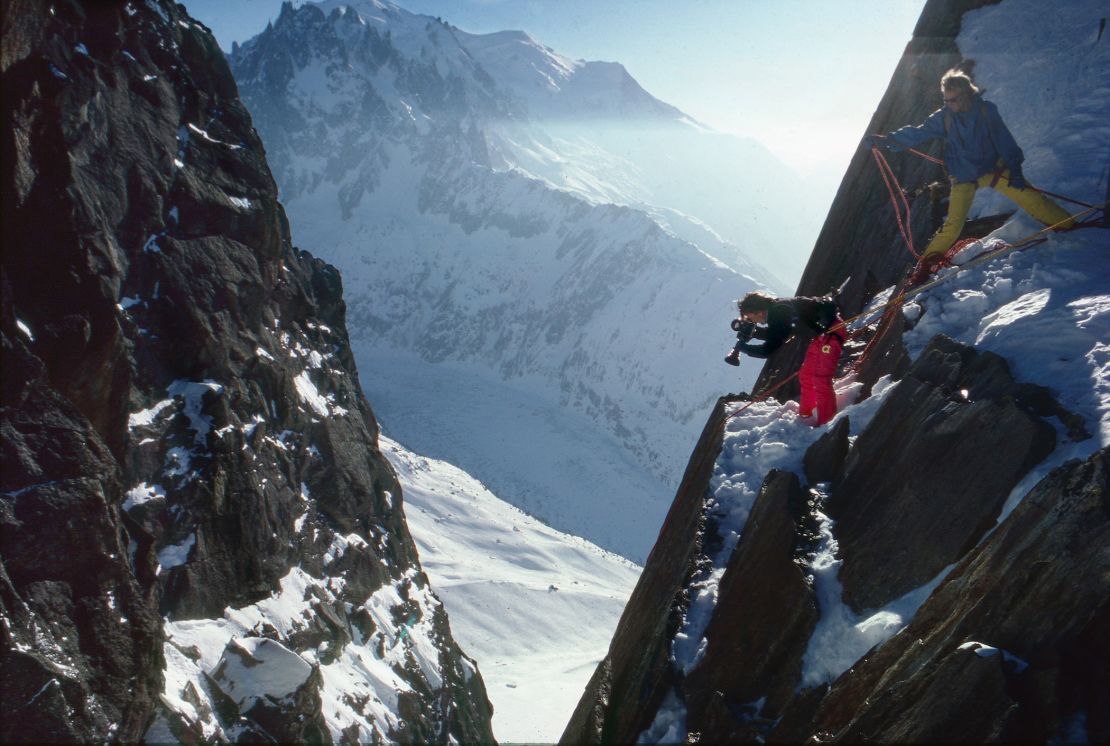
‘Mind blowing’
Stump’s vision for the film was to showcase the freedom of skiing in Europe compared with the strict controls governing out-of-bounds skiing at US ski resorts.
“We got into so much trouble and got kicked out of so many places trying to film the steeps in the US,” he says.
A 12-day storm hampered filming when they first arrived in Chamonix, but when the weather cleared they jumped on the first tram of the season up the Aiguille du Midi, a 12,600-foot rock spire towering above the town.
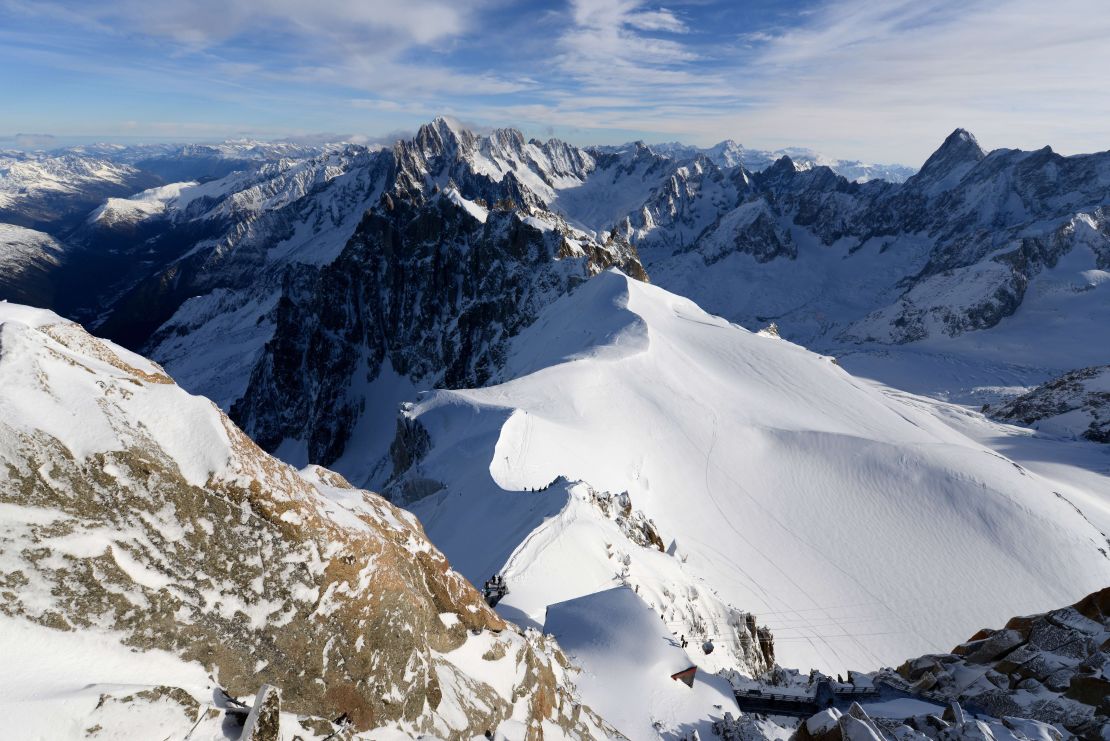
“It’s mind-blowing that area. It is something special, it’s intimidating,” Hattrup says.
One of the first lines they looked at was a steep chute called the Couloir des Poubelles (dustbin, in French), which accesses the famous Vallee Blanche glacier.
Schmidt said he would ski it “for sure.” The camera then pans to Hattrup. Stump asks if he wants to go in.
“I was thinking, ‘If you shut off the camera I’ll tell you the real answer,’” Hattrup says. “But I let out this meek little timid ‘yeah.’ You can almost see the fear in my eyes through the mirrored lenses I was wearing.”
So began an odyssey following in the tracks of guide Murray Ball around some of Chamonix’s classic ski lines, with songs like Frankie Goes to Hollywood’s “Warriors of the Wasteland” as a soundtrack.
“The whole Chamonix experience was quite eye-opening for all of us,” Hattrup adds. “It exposed us to terrain and skiing we had never imagined.”
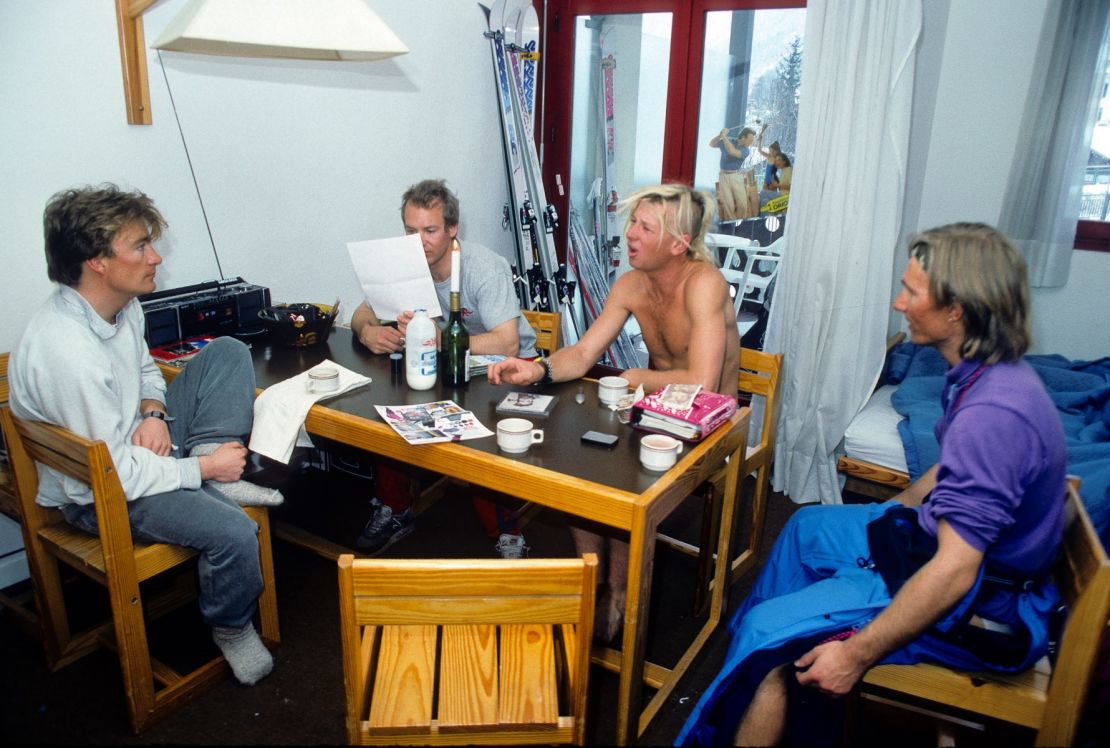
‘I was a fugitive’
Off the mountain, life was “full-on debauchery,” according to Stump. “We had a budget and a thirst for European beer. We partied a lot,” he says.
Hattrup remembers epic, one-sided snowball fights against the French. Schmidt recalls down days exploring the Mont Blanc massif with New Zealander Ball.
When filming was over, the crew headed home.
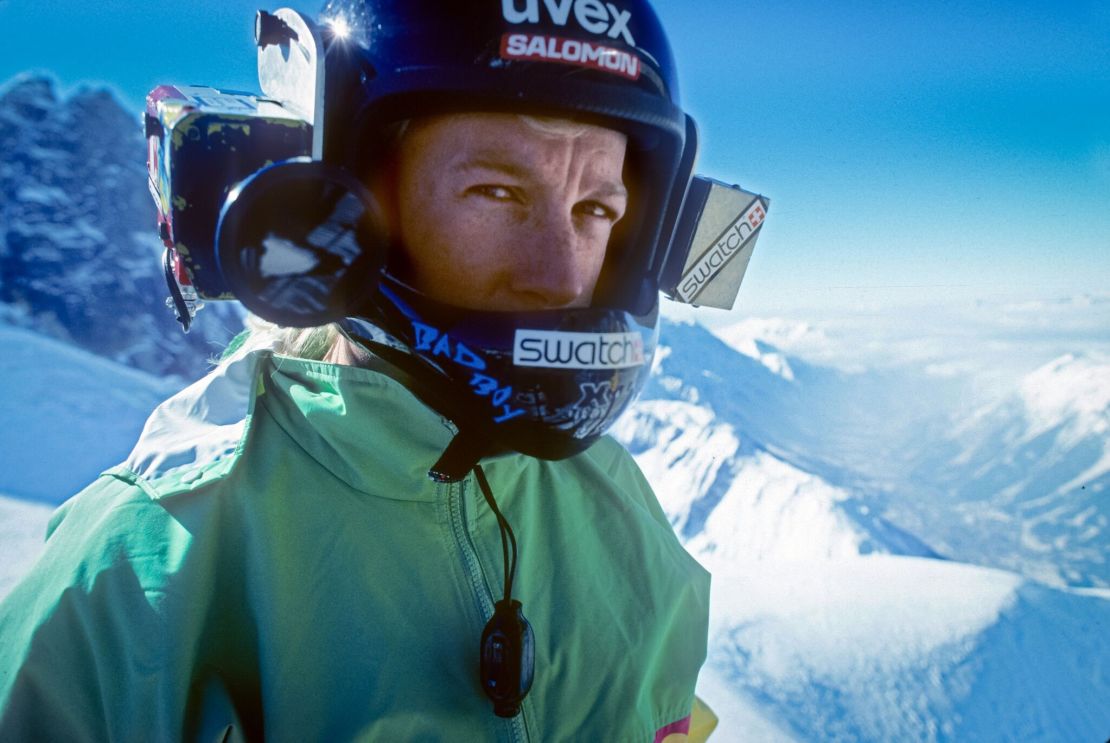
All except Plake, that is. He was wanted in the US on previous drugs charges.
“I was in a lot of trouble, for one,” says Plake, who picked up some construction work and integrated himself into the French community.
“I mean, what was I going back for? I didn’t have a job, and I sold my car to get to the airport.
“I wasn’t ever going to go back. I was literally looking into joining the French Foreign Legion.
“I was looking at six or seven years in prison. It was pretty slam dunk.
“By all definitions I was a fugitive.”
Instant hit
Stump went to work editing back home in Maine. “I looked at all the footage and I just knew,” he says.
He was so convinced he had the raw materials to make something special, he briefed a friend on exactly how he wanted the movie to be made in case anything happened to him.
When the film was released it was an instant hit. Timing was everything, and in the thriving era of VHS, kids could endlessly re-watch their favorite movies at home.
The magic ingredients included focusing on three main characters, a strong storyline, stunning cinematography, thumping music and Stump’s liquid narration, according to Hattrup, though he didn’t foresee it becoming “the quintessential ski movie.”
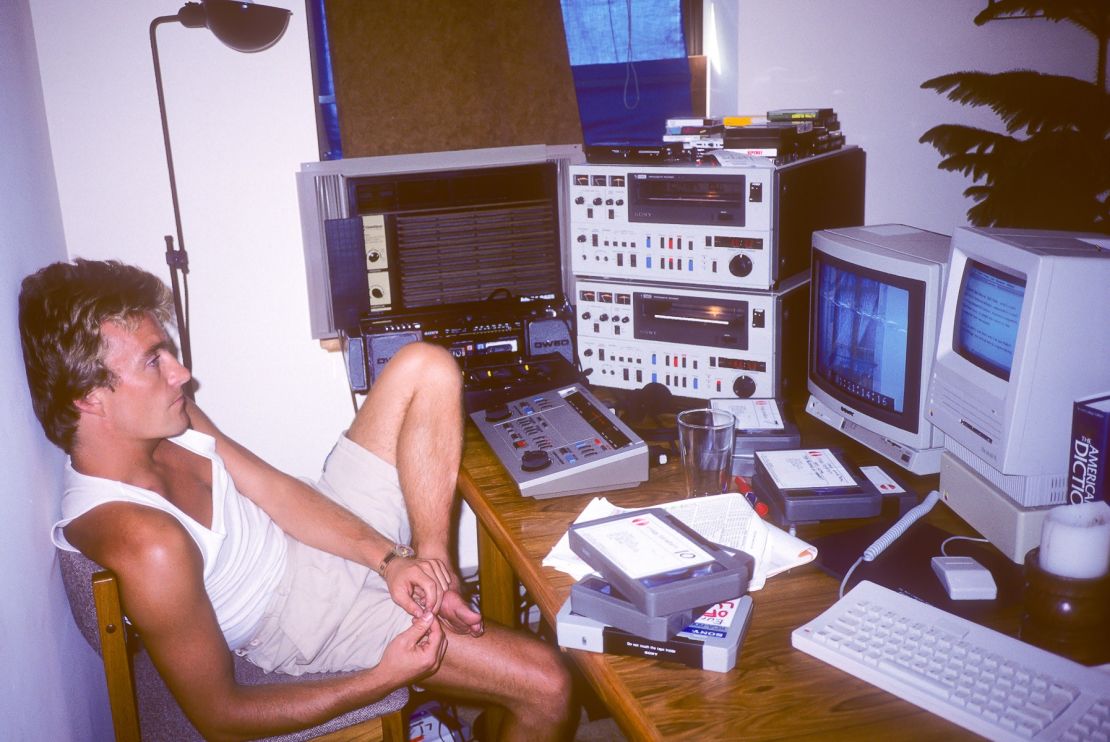
“At the premiere when I first saw the film I was really impressed, with the change of style, the editing, the music … it just resonated with the crowd,” Schmidt says.
The interview requests came pouring in. Even NBC was on the phone.
Stump got in touch with Plake. “Exactly how much trouble are you in?”
Arrangements were made for a lawyer. In March 1989, Plake flew back to the US to join Schmidt on NBC’s Today Show.
Schmidt and Plake, dressed in a spangly stars and stripes suit with a towering mohawk, clearly inhabited a different planet to host Bryant Gumbel.
“He was baffled and didn’t know what it was we were doing,” Schmidt says.
‘Celebrity skiers’
The crossover into mainstream media was the catalyst for the explosion of “extreme skiing.”
But the film’s stars were uncomfortable with the tag, pointing to the big-mountain, steep-skiing exploits of French pioneers Patrick Vallencant, Jean-Marc Boivin and Pierre Tardivel.
“I knew the difference,” Plake says. “We were California hot-doggers and cliff jumpers.
“What we were doing was not quintessential extreme skiing. Somebody asked me in an article a year or so later if I was a ‘Chamonix extreme skier.’ I said, ‘No, but give me 10 years and I will be.’ At that point I was missing an entire skill set.”
Hattrup was inspired by the Chamonix shoot and qualified as a mountain guide in the US, alongside a 27-year career working for K2.
Schmidt’s trajectory was already on the up, but it propelled him into “hyperdrive” in the ski world.
“To me there was no bigger celebrity on earth,” Douglas said of Schmidt on his Salomon Freeski TV series.
Now Schmidt splits his time between Santa Cruz and the private Yellowstone Club resort in Montana, where he is an ambassador and resident ski pro.
Plake eventually did some jail time and community service for his drug charges. He quit drugs soon after and later turned his back on alcohol too.
After his wedding in 1991, he and wife Kimberly took a honeymoon tour around 50 of America’s lesser known ski resorts in 33 states, just turning up in their motorhome and skiing with whomever.
It became known as the “Down Home Tour,” and six more followed. Plake, who calls himself the “oddball” of the ski industry despite his longevity, was inducted into US skiing’s Hall of Fame in 2010.
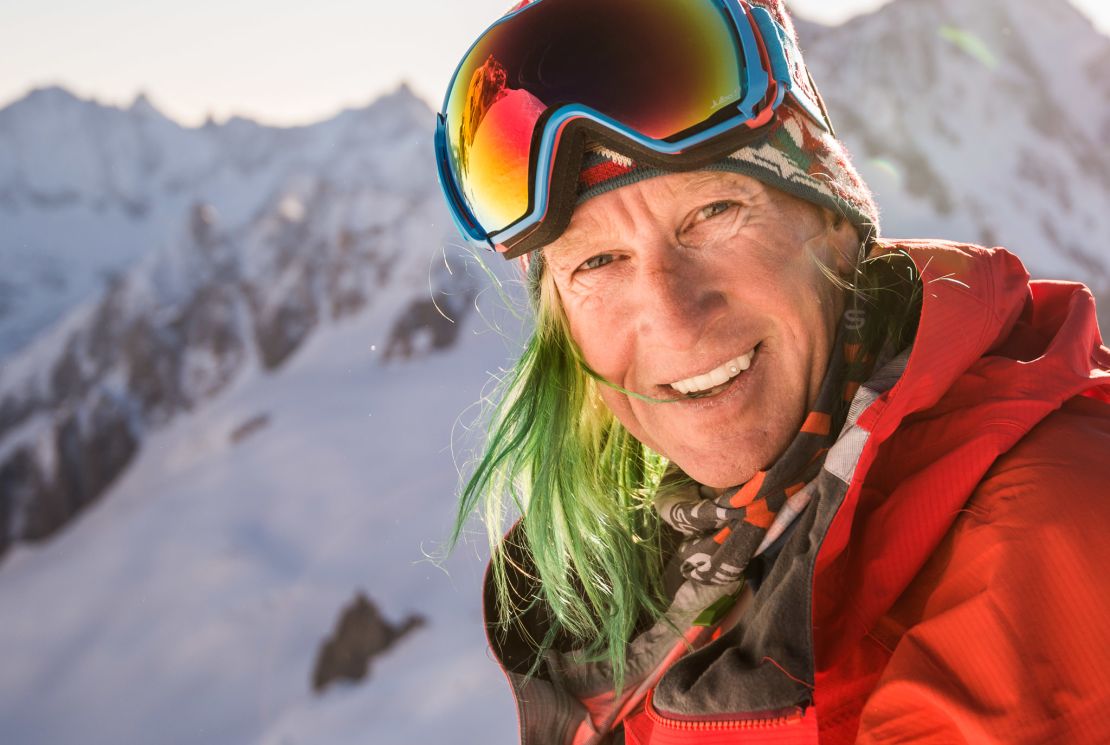
Tragedy
Plake recently qualified as a ski instructor and is also going through his guide’s training in Chamonix and California’s Mammoth Mountain, where he is an ambassador.
His work has taken him to Nepal, teaching skiing to aspiring mountain guides.
It’s a legacy of the 2012 tragedy on Nepal’s Manaslu, the world’s eighth highest mountain at 26,758 feet, when Plake and his climbing partners Gregory Costa and Remy Lecluse were swept away in an avalanche.
Plake was lying shoulder-to-shoulder and chatting to Costa in their tent when the avalanche hit in the early hours of the morning. They plunged hundreds of meters down the mountain. When the slide stopped, Costa had disappeared.
“I found every personal item in that tent except him and his sleeping bag,” Plake says. “I found his glasses, his gloves, my jacket he was using for a pillow …”
Costa was never found. The body of Lecluse, who had been in a separate tent, was later recovered from a crevasse. In all, 12 people died in the avalanche.
‘Pact with God’
“Blizzard” was Stump’s ticket to Hollywood. He directed commercials, music videos and documentaries with the likes of Seal, Willie Nelson, Neil Young and the Beach Boys, as well as making a host of other ski films, including 2012’s “Legend of Aahhh’s.”
However, Stump decided to stop making “extreme” ski movies when Schmidt and snowboarder Craig Kelly had several near misses with avalanches, notably in British Columbia in 1996.
“I’m not a religious guy but I made a pact with God: ‘If you get these two guys off this face, I’ll quit. I’ll never put a friend in a dangerous situation again,’” says Stump, who is working on a couple of scripts for a new feature film set in a winter environment.
Visit cnn.com/skiing for more news and videos
“Blizzard” may be 30 years old, but for a generation it remains the spark that lit their skiing fire.






